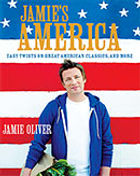- Healthy recipes
- Healthy snacks
- Healthy lunches
- Healthy chicken recipes
- Healthy fish recipes
- Healthy vegetarian recipes
- Main Ingredient
- Chicken
- Pasta
- Vegetables
- Fish
- Beef
- Eggs
- View more…
- Special Diets
- Vegan
- Vegetarian ideas
- Gluten-free
- Dairy-free
- Budget recipes
- One-pan recipes
- Meals for one
- Breakfast
- Desserts
- Quick fixes
- View more…
- Baking recipes
- Cakes
- Biscuit recipes
- Gluten-free bakes
- View more…
- Family recipes
- Money saving recipes
- Cooking with kids
- School night suppers
- Batch cooking
- View more…
- Special occasions
- Dinner party recipes
- Sunday roast recipes
- Dinner recipes for two
- View more…
- 5 Ingredients Mediterranean
- ONE
- Jamie’s Keep Cooking Family Favourites
- 7 Ways
- Veg
- View more…
- Nutrition
- What foods are good for gut health?
- Healthy eating tips
- Special diets guidance
- All about sugar
- Learn about portion size
- View more
- Features
- Cheap eats
- Healthy meals
- Air-fryer recipes
- Family cooking
- Quick fixes
- View more
- How to’s
- How to cook with frozen veg
- How to make the most of your oven
- How to make meals veggie or vegan
- View more
- More Jamie Oliver
- YesChef x Jamie Oliver
- Cookbook Club
- Jamie Oliver Group website
- Jamie Oliver Cookery School
- Ministry of Food
- Vegepedia
Navajo flatbreads
The easiest, most versatile flatbreads for breakfast, lunch or dinner
- Dairy-freedf
- Veganvg
- Vegetarianv

The easiest, most versatile flatbreads for breakfast, lunch or dinner
- Dairy-freedf
- Veganvg
- Vegetarianv
“A cross between Indian naan breads and Mexican tortillas, these flatbreads are brilliantly simple ”
Serves 10
Cooks In35 minutes plus relaxing time
DifficultySuper easy
Jamie's AmericaBreadAmericanSides
Nutrition per serving
-
Calories 277 14%
-
Fat 8.6g 12%
-
Saturates 1.3g 7%
-
Sugars 0.8g 1%
-
Salt 0.93g 16%
-
Protein 6.9g 14%
-
Carbs 45.8g 18%
-
Fibre 1.8g -
Of an adult's reference intake
Tap For Method
Ingredients
- Metric
- Germany
Would you rather see the UK version? Would you rather see the US version? Would you rather see the Australian version? Would you rather see the German version? Would you rather see the Dutch version? Você prefere ver a versão em português? Close
- 600 g strong white bread flour , plus extra for dusting
- 2 heaped tablespoons baking powder
- 1 teaspoon dried herbs or spices, such as thyme, parsley, sumac or crushed fennel seeds , optional
- 6 tablespoons olive oil
Tap For Method
The cost per serving below is generated by Whisk.com and is based on costs in individual supermarkets. For more information about how we calculate costs per serving read our FAQS
Tap For Ingredients
Method
- These flatbreads are a sort of cross between Indian naan breads and Mexican tortillas. They’re used for breakfast, lunch or dinner and carry, complement or mop up whatever is being served with them. Apparently, in the old days, if a Navajo woman couldn’t whip up a batch of fluffy flatbreads, her chances of marrying a decent bloke were pretty low. No pressure! These are brilliantly simple to make.
- Mix your flour, baking powder and herbs or spices (if using) in a large bowl with 1 heaped teaspoon of sea salt, using a fork. Make a well in the centre, then pour in the olive oil and about 150ml of warm water. Use the fork to gradually bring in the flour from the edge of the bowl, and add another splash of water if you think it’s too dry. Once it starts to combine, wet your hands and use them to really bring it all together until you have a nice ball of dough.
- Dust your hands and a clean work surface with flour and knead the dough with your hands until it is smooth and elastic. This will take about 5 to 10 minutes. Pop the dough back into the bowl, dust it with a bit more flour, then cover and leave to relax.
- Divide your dough into 10 equal-sized balls, then lightly oil your hands and squeeze each ball between your palms to flatten them slightly. Dust with a little flour as you go, and pat and slap the dough from the palm of one hand to the top of the other. Turn and twist the dough about in a circular movement as you go and keep slapping from hand to hand – each flatbread should be about 1cm thick. You’ll probably mess up a few, but practice makes perfect.
- Normally the flatbreads are cooked as you’re making them. You can do this on a barbecue or in a non-stick frying pan on a medium heat. Cook them for a few minutes on each side and check the underside – you want them to puff up with a nice bit of golden colour. Keep them warm in a basket covered with a tea towel until you’re ready to serve them.
- Serve them while they’re lovely and warm, or you can reheat them with anything from burgers, to stews and soups, to salads.
Related features
7 sensational sandwich recipes
7 twists on avocado on toast
Bread baking for beginners
Related video
BBQ flat bread with wild garlic dressing: Jamie Oliver
© 2024 Jamie Oliver Enterprises Limited
- Terms of Use
- Privacy Policy
- Cookies
- Jamie Oliver Group
- Contact
- Sitemap
© 2024 Jamie Oliver Enterprises Limited
